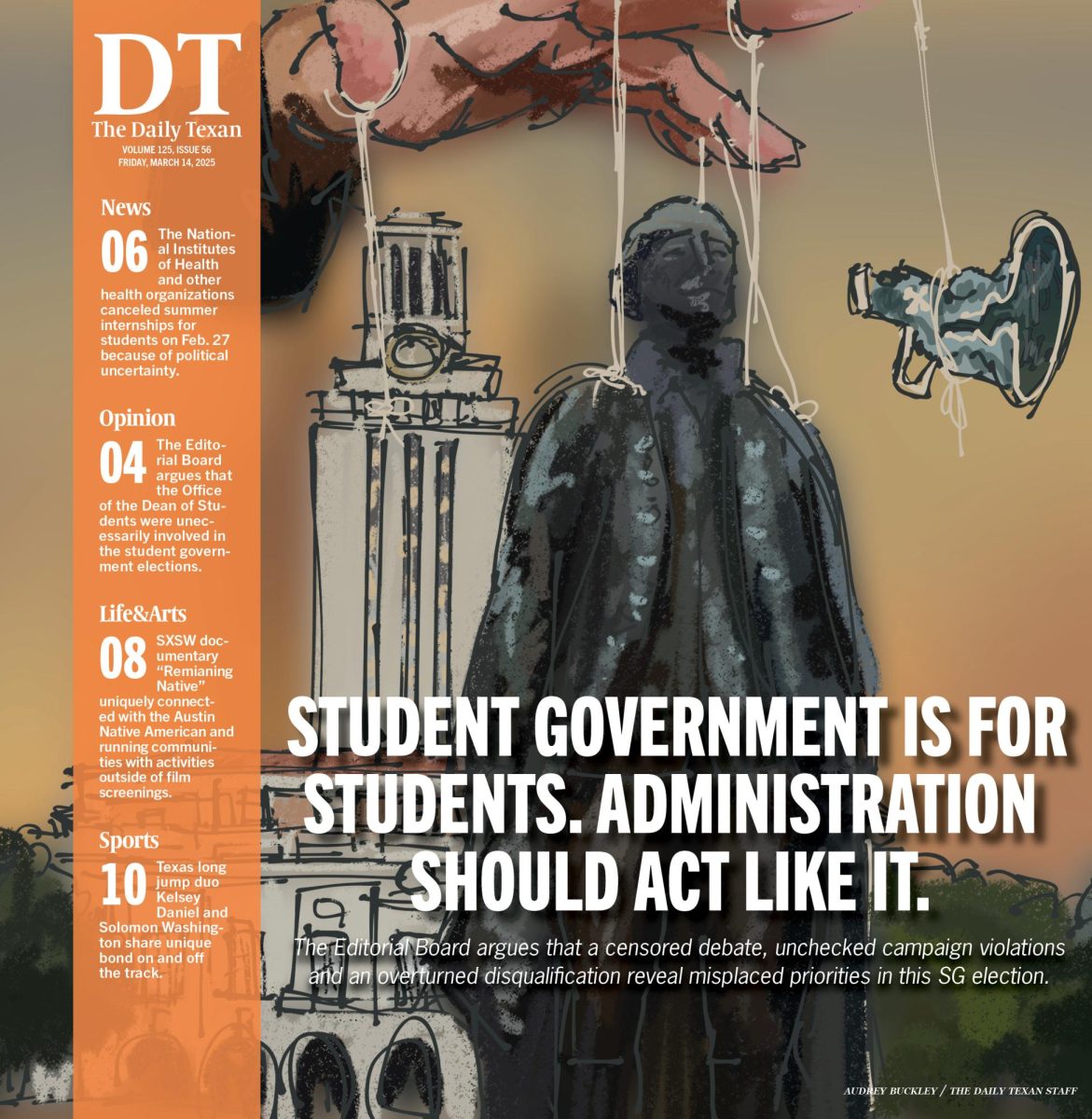Give Gender and Sexuality Center more space
June 23, 2022
Editor’s Note: This article first appeared as part of the June 21 flipbook.
The Gender and Sexuality Center currently resides on the second floor of the William C. Powers, Jr. Student Activity Center and serves as an inclusive space for many, particularly LGBTQ+ students. This allows students to express themselves and connect with others of similar identities and interests. Unfortunately, its current location on campus has pushed the GSC and its members into a small corner of the Forty Acres.
The center and the students it supports deserve more than to be placed in a “hard to access” building. For the center to continue growing and improving, the University should move it to a larger space so that more students can participate in events and use its resources.
While the GSC is now in the Student Activity Center, this wasn’t always the case. Two years after the establishment of the GSC in the Student Services Building, the center moved to a bigger space in the same building. In this new location, traffic increased 400% from the previous year.
From a small conference room on the first floor of the Student Services Building to securing a spot on the second floor of the Student Activity Center, the GSC has had a long history of attempting to get more space for its community. It’s been 11 years — over a decade — since its fourth and most recent move.
While another relocation cannot guarantee a higher percentage of walk-ins, like the center’s move in 2006, the State of LGBTQIA+ Affairs at UT Austin’s report states that the amount of walk-ins to the GSC has steadily increased from fall 2019’s reported number of 6,761 students. With interest in the center’s resources rising, a bigger space could potentially encourage other students on campus to attend events and start participating as members.
Increasing the GSC’s space would also help allow it to host bigger events and assist in its outreach to gather more members and support more students. Justin Phung, a music junior and part of the center’s Student Leadership Committee, believes that the GSC’s current position on campus provides the community with a homey environment but admits a bigger space would benefit its outreach attempts more.
“I think (the center’s current space is) very opening and inviting. It’s very comfy and cozy. … (The GSC is) kind of in this secluded area on the second floor of the building,” Phung said. “I (think) if it was in a bigger area that more people saw or walked around, it would be nicer. … Just in general, I think it’d be really nice to gather people around. When we had our clothing swap, though, there (were) many people (on) Speedway who went to that event, and I think more outreach in (the) GSC would be nice.”
The fact that a GSC event in a well-known area of campus resulted in high demand with a positive turnout proves a larger and more visible space can help improve its outreach.
Despite multiple requests, the Division of Diversity and Community Engagement was not available for comment prior to the publication of this article. It’s disappointing that the University won’t take the time to comment on an issue when it could help support and uplift the LGBTQ+ community on campus.
While the University has taken steps to better support the LGBTQ+ community, it can do a lot more. As an important on-campus space for LGBTQ+ students, the GSC deserves better resources to continue supporting the student body.
Ramos is a journalism sophomore from Laredo, Texas.












